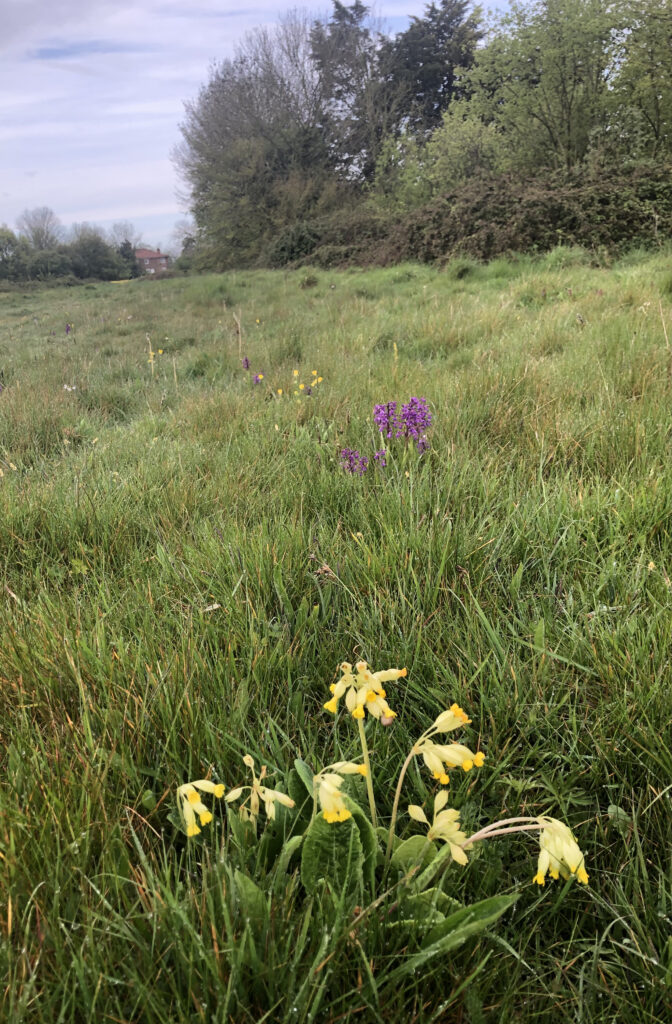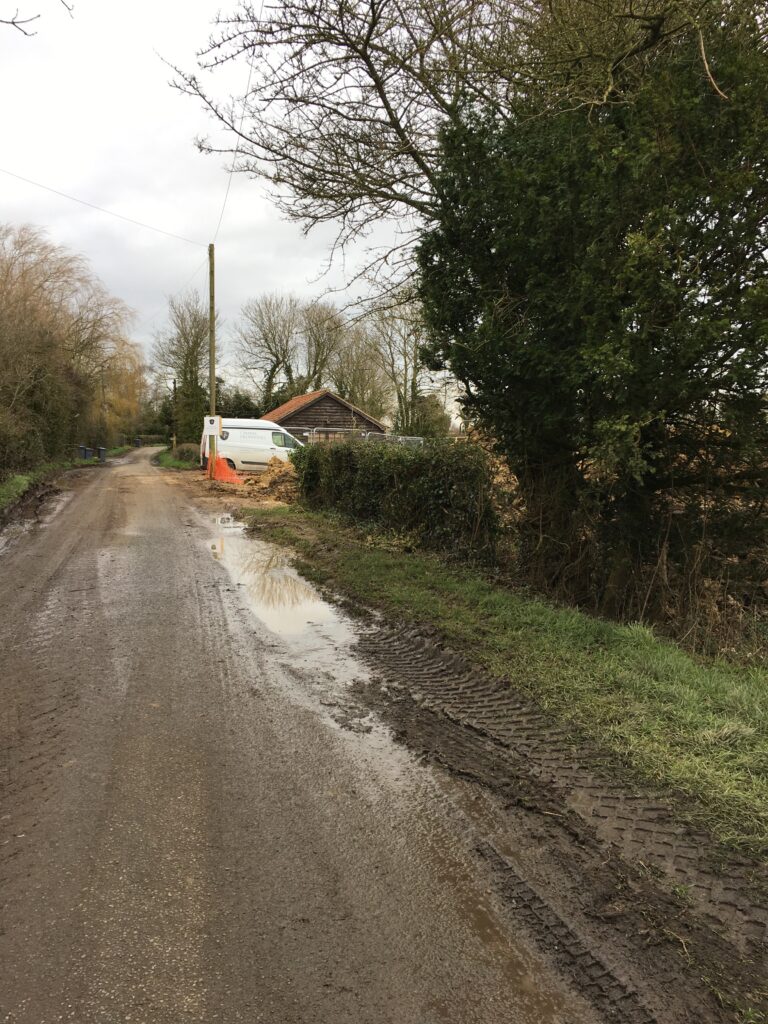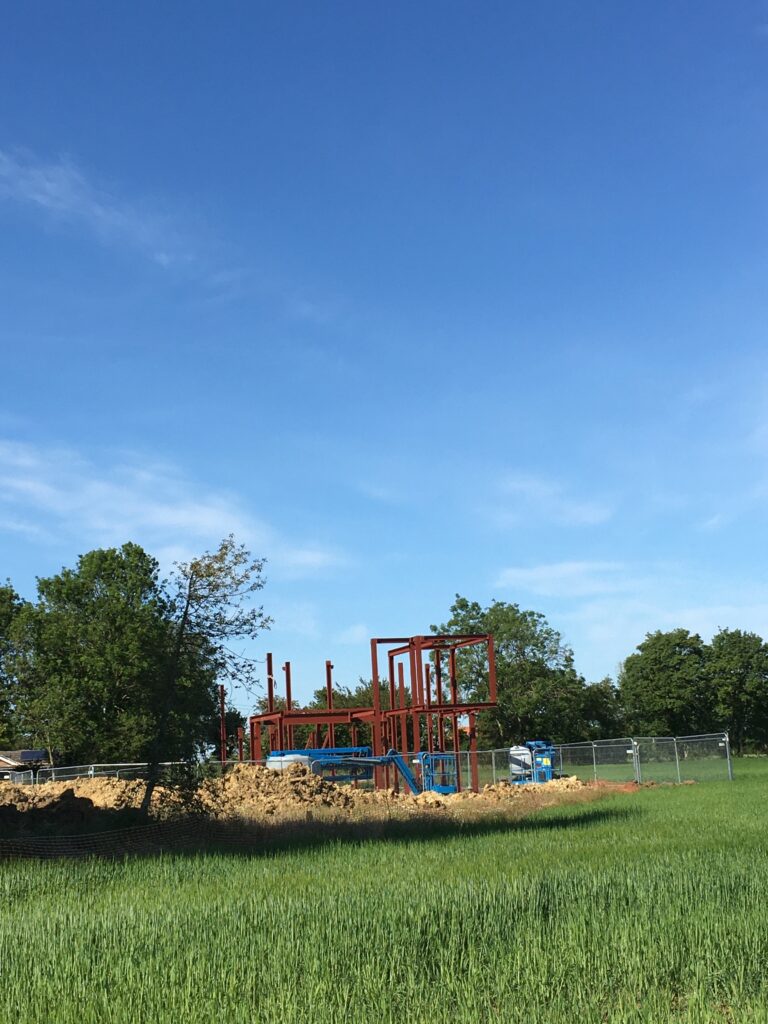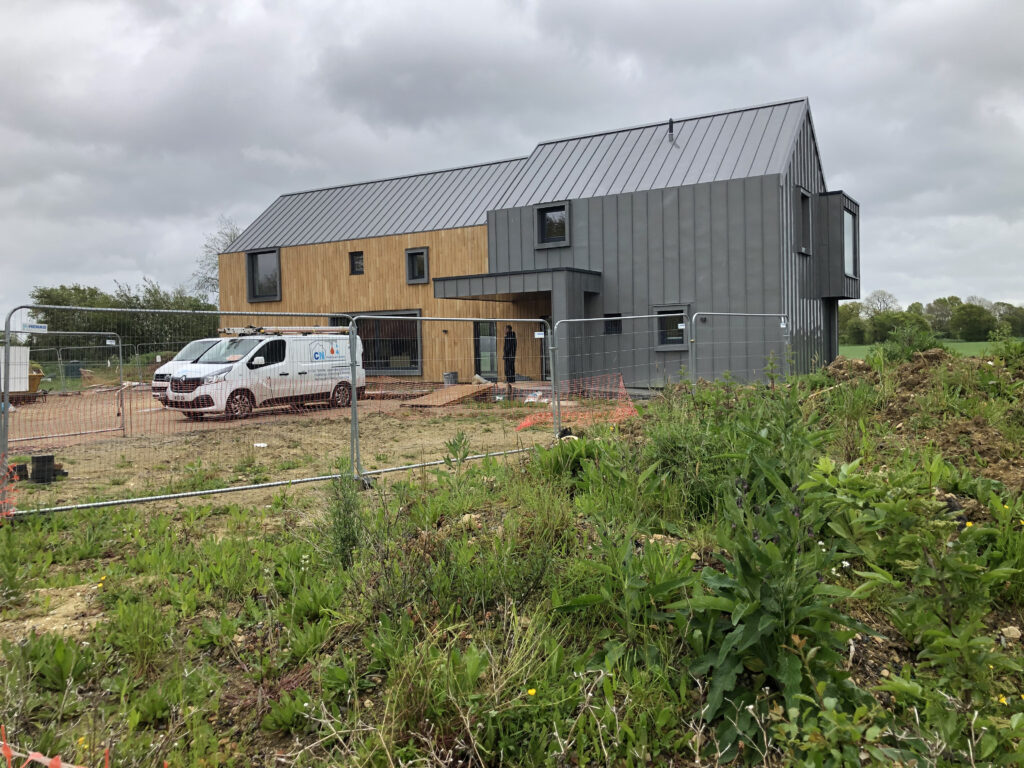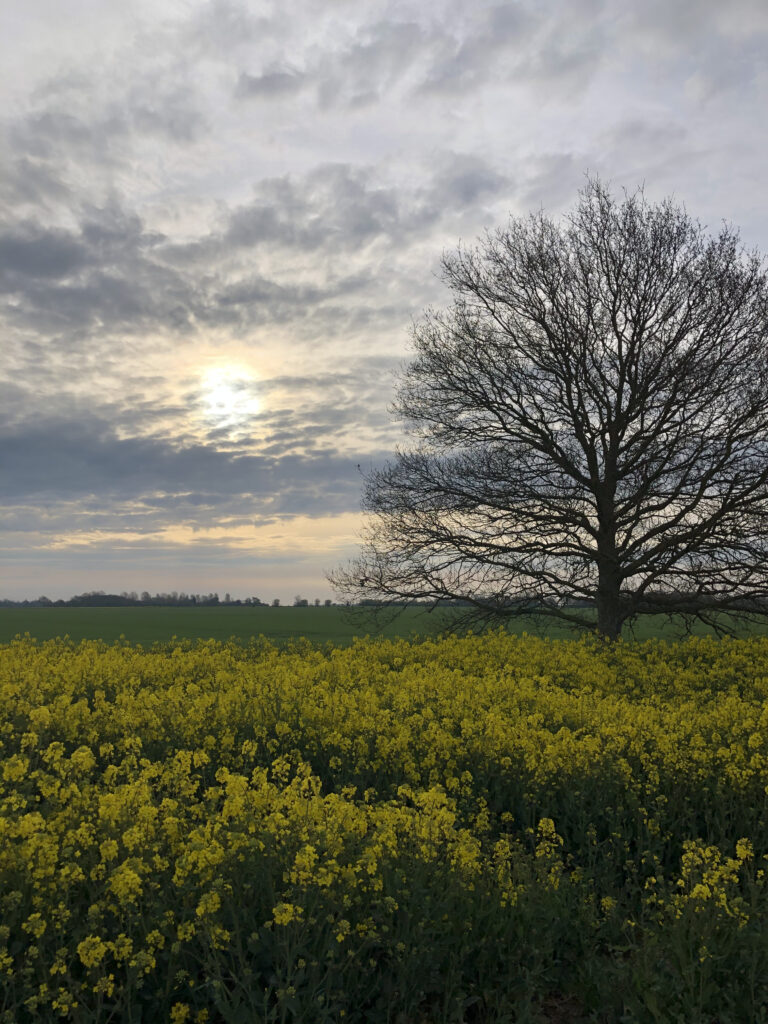
“New month, new weather.” At the end of Siberian – though dazzling – April, with its drought, its hard frosts and its icy winds, the longing for something warmer and kinder was intense. Would the old saying hold good and a new weather pattern establish in May?
And indeed the weather did change as April ended. May blew in with a damaging gale (cue the “Rough winds do shake the darling buds” quote, but of course I should not be so obvious…), and low pressure and Atlantic systems established themselves – firmly. Was it warmer? Barely. Did it rain? A great deal. And all month long strong winds howled, grey and inky skies loured, hail and thunderstorms battered fields and garden.
As May ends the saying holds true: the sun emerges, the sky has cleared to blue, and there is blessed warmth. Seedlings and infant plants, held paralysed for two months in shivering stasis, begin to grow at last. The fig trees in my garden are beginning to put out leaves:
When his branch is yet tender, and putteth forth leaves, ye know that summer is nigh (Matthew 24, v 32)
But is this glimpse of summer to be trusted? In a parallel process the country, held in lockdown for so long, begins to be released. But the shadow of Covid still hangs over us, snatching our freedoms from us. Will they last? Will the sun go on shining? Maybe there is more chance of the latter, for once again oak came into leaf before ash, predicting a dry summer.

What positive can be said of miserable May? The continual cold caused the flowers of spring to last far longer than usual. The vivid yellow of the rape fields lasted the month long, and provided the only brightness we had some days. Wildflowers bloomed at dates more in keeping with seasons 30 or 40 years ago than with our recent globally-warmed climate. The green winged orchids on the Common put on a show unrivalled in many years, their vivid magenta juxtaposed with the gold of buttercups – another example of Nature’s complementary colour scheme. I can think of no word other than the clichéd “carpet” to describe their range and spread this year. Heated arguments raged on a local forum about whether their whereabouts should be publicised, lest people dig them up, but I have never seen this happen, and the Common and its location is well known as a Site of Special Scientific Interest.
In mid-May the horses returned to the Common to trample down the seeding orchids. There are fewer this year, but two of the mares have foals. Our morning passage across it is less stressful than recent years, thanks to the absence of the aggressive grey mule. When she was there, no sooner was the stile crossed, or the gate opened, than her head would go up, and she would lead the herd menacingly towards the intruder. And if there happened to be an accompanying dog, however tightly on a lead, the intimidation would become intense. But this anxiety is no more. However, woe betide anyone foolish enough to park a car beside the criss-crossing roads: wing mirrors torn off, aerials snapped, bumpers dented.
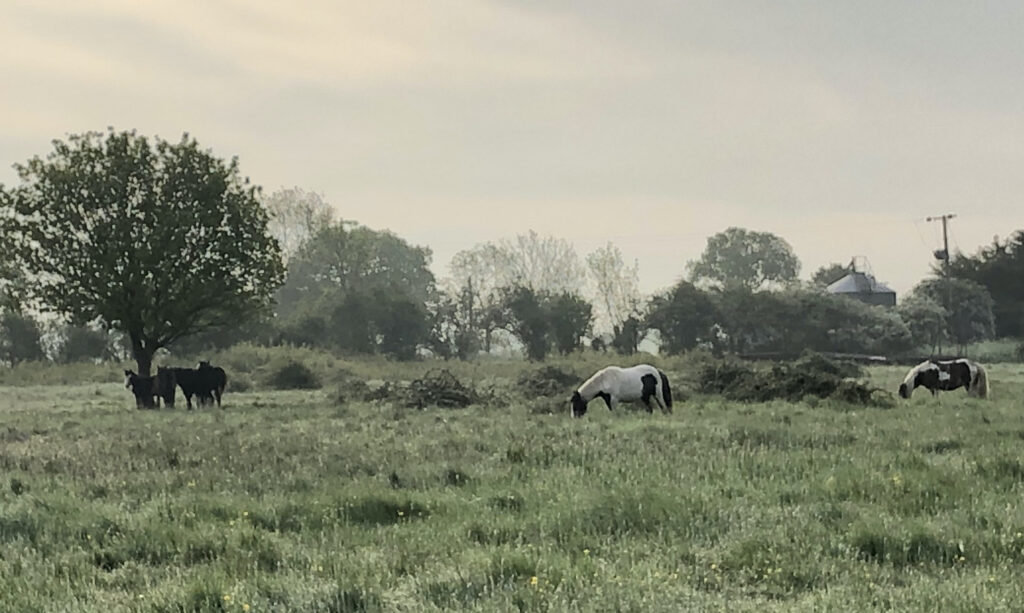

I have learned something new. I was about to write about the other name for cow parsley, whose bridal frothiness is at its peak just now, and obscures the bends in the lane, making driving on our one-track roads adventurous. That name, I thought, was Queen Anne’s Lace, more dainty and descriptive than the prosaic cow parsley, which more strongly suggests its rural context. But these are not the same plants, and all my life I had thought they were. The (usually) omniscient Wikipedia tells me that cow parsley anthriscus sylvestris, known as wild chervil, wild beaked parsley, or keck, is a herbaceous biennial or short-lived perennial plant in the family Apiaceae, genus Anthriscus. It is also sometimes called mother-die, a name that is also applied to the common hawthorn. Queen Anne’s Lace, on the other hand, is daucus carota, though of the same family, whose common names include wild carrot, bird’s nest, bishop’s lace.

Cow parsley 
Queen Anne’s Lace
I am not surprised that the common hawthorn (or may) might be called “mother die”, for when in flower, as it is – somewhat late – at the moment its smell has a whiff of death about it, a slightly indecent decaying fishiness. The old saw “Ne’er cast a clout till may be out” certainly held true this year, but might more correctly be translated as “Stay in your winter woollies till the end of the month.”
In the paucity of new material for this chronicle, I am now going to write of the building work next to my house, and lay myself open to accusations of acute NIMBYism. I acquired this house some 18 years ago after a search for a home where I could live in silence. I don’t mean I do not wish to hear the sounds of the countryside, and tolerate quite happily the roar and drone of farm machinery. But what, since a child, rouses me to pain, and anxiety, and ultimately murderous fury (I now gather this is a thing: misophonia) is the noise of music and voices mediated electronically. You could put a symphony orchestra in the field next to me and I should not turn a hair, but play that on a radio or other means, and it becomes unbearable. Weird, yes, and it makes life difficult. It’s not something one can just “get over” or “block out”, and even headphones don’t cut it.
When I bought the house, there were fields both sides, and I was told it was agricultural land and could not be built on. Down the lane my elderly neighbours lived in a little cottage by the side of the road, but they are long gone. When they sold in order to move to a bungalow in a nearby town, the daughter of a local farmer snapped up both cottage and field at the asking price. The old cottage was deemed to be an agricultural building and thus could be replaced or rebuilt. I saw the plans: a Grand Design, a veritable palace, would go up in its place…but in fact not in its place, but set back from the road, directly overlooking my house.
In January 2020 the old cottage was demolished. Since then, every day (with a short break during the first lockdown) the lane has been busy with vans, trucks, diggers, cranes, constant deliveries. There have been pile drivers sending shock waves felt through the house, banging, drilling, beep-beep-beeping, and – of course – loud thumping music from radios (which to be fair they did turn down a bit when asked). The work is still ongoing.
It will finish one day. That is not the point of this diatribe. What is the point is that all of us who live locally find it an egregious monstrosity. Its size and ugliness dominate the landscape and the streetscape, visible all round in winter. Its Grand Design pretensions sit uneasily in its rural context. “Petrol station”, “detention centre”, “supermarket” have all been thrown at it by aghast villagers. One wonders at planners who permit these buildings, and yet who balk at replacing cement rendering with traditional lime on a 16th-century farmhouse.

Heveningham Hall 
Ufford Hall
I said that I lay myself open to accusations of NIMBYism. I wonder whether it has been always thus. I think of great houses locally. Did people gape at Heveningham Hall in its Palladian splendour in the early 1780s, and mutter that it was too big, too overbearing, too modern and out of keeping? Did they say the same a century earlier of Ufford Hall in Fressingfield where Archbishop Sancroft lived his last years? Today we think these buildings magnificent, beautiful. I hope history turns a kindly eye on the “monstrous erection” next door. I am unlikely to. Grump grump grump.

What more to say of unkind May save that I think everyone is glad to see the back of it ? And now with the new month comes summer. It came just in time to spend some hours at Mendham Mill, where Munnings was born. I went with a group of plein air painters whom I join sporadically when I can. On a day at the very end of May under deep blue sky and a dazzling and burning sun, I sat in idyllic quiet beauty by the river Waveney. On the other side of the river was a meadow scene straight from a Dutch pastoral painting. The water sparkled, the foliage was still in its electric lime green of spring. There is nowhere on earth more beautiful, more splendid than Suffolk when the sun shines.




